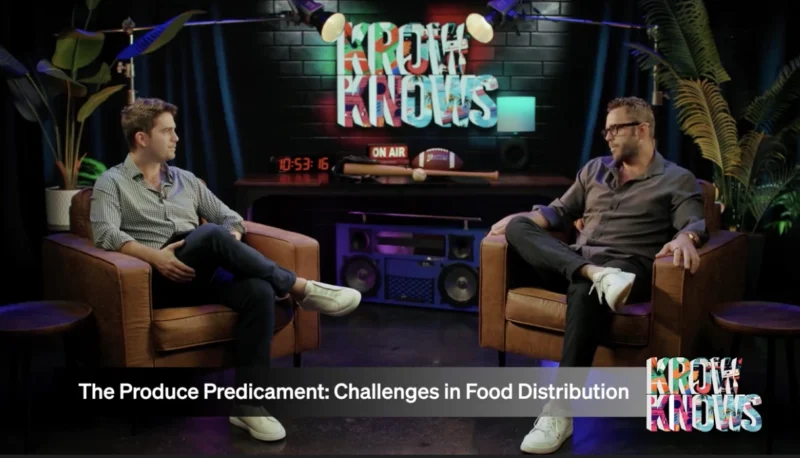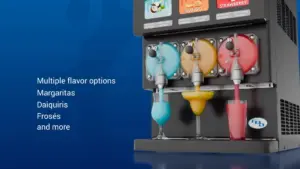How Will the Surging Grain Prices Impact Farmers?
The grain prices in the US are on an upward trend, but what does that mean for crop suppliers? Tune in below to hear Syngenta CEO Erik Fyrwald speak about agricultural commodities and what factors like extreme weather and demand have on the market.
Host: Let’s bring in Erik Fyrwald. He is the CEO of Syngenta. The agrochemical company reported first quarter group’s sales of $7.1 billion a little earlier to 20% gain year over year. Eric, Thanks for your time today. We really appreciate it. Look, the grains market is surging higher on an almost daily basis at the moment. What does that mean in terms of planting? It always strikes me that the ag market is reasonably self-correcting. You see higher prices. People plant more of the stuff.
Fyrwald: That’s a definite, if you will, definitely see some expansion of hectares across the world, but it won’t be major. There’s you know, the farmland is being used today, but there will be more planting, no doubt about it.
Host: So do you see, Eric, a grain supercycle? The way we’re talking about it when it comes to copper, for example, like how long can these prices truly last?
Fyrwald: It could be a couple of years. It depends on the weather, which is a big factor. As you heard earlier, there are increasing weather extremes. Now that we’ve never seen before, whether it’s the derecho wind event that surprised us all in Iowa last year or massive droughts that we’ve seen in Australia, and Western United States. Or flooding now in Australia or flooding in China last year. We’re seeing increasingly dramatic weather events. And I think that’s been part of the cause of it. I think COVID has been a bit of a cause as well. So this could last a while if the weather isn’t optimal for regaining the stocks.
Host: So part of it is that sort of reshuffling of demand, et cetera, and then the extreme weather. But I’ve also been reading a lot about extreme weather. Wrecking transportation like freight rates are really high. There’s not enough water in certain channels to get a tanker over that, have the supply, et cetera. Can you walk me through how you see that evolving that’s going to affect whether or not these prices are transitory or more permanent?
Fyrwald: I think the logistics system is starting to get strained because we’re starting to come out of COVID in a number of markets, and I don’t think that’s having a major impact on grain prices. I think it’s more weather extremes concerned about the future. And there were limited stocks. China has reduced their corn stocks. So they’ve gone from self-sufficient to a significant importer of corn China had Africa swine fever with their pork population. And so they’ve gone to a more industrialized model. So that means more corn and soybeans. So and the world population is growing and a lot of poor people around the world are getting more income, are becoming more middle class and are going from carbohydrate to eating more protein in their diets. So there’s a market growth, there’s a climate change impact with weather extremes.
Host: And there’s been a COVID factor. Eric, I just want to pick up on that point about what you said about protein, do you think we’re going to get to the point where governments are going to mandate less meat eating?
“The world population is growing and a lot of poor people around the world are getting more income, are becoming more middle class and are going from carbohydrate to eating more protein in their diets. So there’s a market growth.”
Fyrwald: Well, I think that consumers will continue to eat meat for many, many years. I think there’s a growing element of the consumer base, particularly younger people that like the plant based diet alternatives and see that as attractive for a number of reasons. And so the plant based market is growing. We’re participating in that by helping to breed crops that taste better as plant based products. But we’re also doing a lot of work that’s really exciting to help the meat and dairy value chains become more sustainable as well. So we’re working on both. And we see both this great growth opportunities. Our high growth rates last year and the first quarter of this year were driven by sustainable products and services. We’ve been focusing on sustainability and on helping farmers adapt to climate change with weather extremes to adapt to the weather extremes and mitigate climate change by reducing the carbon footprint of agriculture for a number of years now. And it’s starting to pay off with big demand growth. So growth for sure.
Host: Are those endeavors, are they profitable yet?
Fyrwald: Oh, yeah, absolutely. You saw that our revenue grew by 20% Our earnings grew by 19% Now, the earnings growth was a little bit smaller than the revenue growth because we’re investing very aggressively in research and in New innovations, both product in the seeds, crop protection, crop nutrition, biologicals, but also in digital tools. The agriculture industry is going through a transformation with digital tools that we’re seeing pickup and the opportunities there.
Host: Just going to wrap this all up, do you think we’re heading for food price inflation? It’s less of a factor for developed markets, but it’s a huge problem for emerging markets. What is your sense of the kind of inflation rates that we’re going to see in food prices?
Fyrwald: Well, we’ve seen dramatic increases in and grain prices. That’s going to go into food prices. So there again, that’s why we’re seeing high growth rates for Syngenta group, because we’re going to farmers and we’re helping farmers that now want to grow more because there’s more opportunity for them to sell at higher prices. And we’re bringing them products that help them grow a great crop in any climate weather extreme scenario. And they’re going to get paid for that. So they’re willing to invest with us in this innovation, both products and services, to get a great crop because there’s a great market.
Host: Before we let you go, what’s the coolest thing that Syngenta is now working on in terms of sustainability for your farmers? Like what’s not out yet, but what you’re working on that can really kind of transform emissions and also get more bang for your buck when it comes to crops?
Fyrwald: Well, the concept of capturing carbon in the soil is a great opportunity for farmers around the world. And we’re bringing both seeds, crop protection products and digital tools to help farmers do that. And they and the idea is you don’t kill the soil. You leave the soil impact intact. So that the carbon stays in the ground and you grow your crop and then you grow a cover crop between seasons. So there’s more carbon going into the soil. We help farmers do that. And capture soil. Then the soil is richer and able to grow a better crop the following year. So the opportunity for farmers to be a significant part of the solution to climate change to me is the most exciting and it impacts our seeds business. We’re growing. We’re growing seed products. Now that help bring the carbon into the soil and helps our crop protection business because we provide protection products that help farmers not have to kill and keep the carbon in the soil. And our biological products, which are like help, help grow the plants better. They’re like vitamins for the plants. They further increase the amount of carbon in the soil. So it’s helping our entire business grow faster. Farmers are adopting these practices today, and as they get further rewarded for it through incentives like carbon trading or consumers picking products that are sustainably grown. And by the way, we’re now starting to get consumers’ data on how sustainably grown their products were. It’s just it’s going to explode. It’s going to become a much bigger opportunity in agriculture, including for the Syngenta group.
*Bloomberg contributed to this content
—
Follow us on social media for the latest updates in B2B!
Twitter – @MarketScale
Facebook – facebook.com/marketscale
LinkedIn – linkedin.com/company/marketscale










